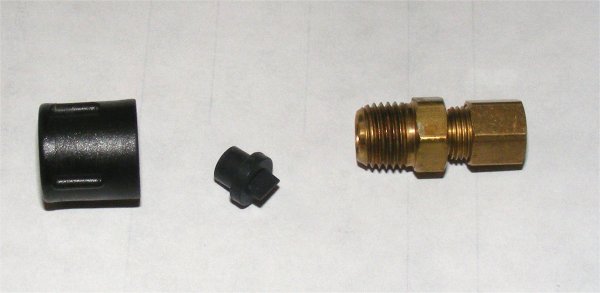Rich H, who seems to know the stuff pretty well, somewhere suggested the FRB-13, an on-demand pump.
I don't know anyone I would trust more on something like this than Rich who helped me design my system.
http://www.cruisingonstrider.us/FOpolishing.htm
http://www.cruisingonstrider.us/StriderFuelSystem.htm
I started with an unregulated Walbro FRA pump in 2008 since it is an open circuit system as you point out. It died after three seasons for unknown reasons. I don't believe this is typical.
I replaced it 15 months ago with a FRA1-1 4.5-7.0 PSI, 20 GPH pump since I couldn't get an unregulated one quickly enough. Since it's an open circuit, the on demand feature is just simply along for the ride. If you look at my schematics, you'll see I have a valve to force fuel to the engine if I'm trying to squeeze a little more running out of it in event of clogging of the engine mounted filter or similar failure. The pressure stop on the pump is some insurance against starting a fuel leak with the unregulated pump.
I've run the new pump, cruising full time, mostly under power, and probably have close to 1500 hours on it now.
My tank is 20 gallons and the nominal GPH should be about the same as your tank so you probably do want to go to the larger pump.
Note my 3 way switch. One setting turns the pump on and off with the engine and the other sets it to a panel switch.
I never got my web site fully updated but I did later install this reserve tank in the system:
It serves primarily as an automatically refilling (whenever the engine is running) gravity supply for my cabin heater but is also about an hour of reserve fuel.
A Forespar Marlon MF 841 Vent/Duck Bill replacement kit for their anti-siphon vent loops fits a 1/4" compression fitting like it was made for it. Another compression fitting goes on the tank and the copper tube is run as high as possible. Air trapped in the tank top and tube will keep fuel from reaching the valve.
Here is the full schematic for my system. It violates several points of gospel you will encounter about the subject on the net but has performed flawlessly for about 15,000 miles.
Note also that I can turn one valve and the polishing system becomes a back up fuel supply while I change the main Racor filter. Running time in this mode is unlimited so no need to change the filter underway.
Oh yes, don't use a Racor for your polishing filter. See my site for the details on the Shelco. If you can fit the standard 10" elements, do so. I didn't have room and it is harder to obtain the half length filter elements. There is almost no difference in cost between the 10" and 5" element units. The 5" elements can actually cost more since they have to be cut in half.




